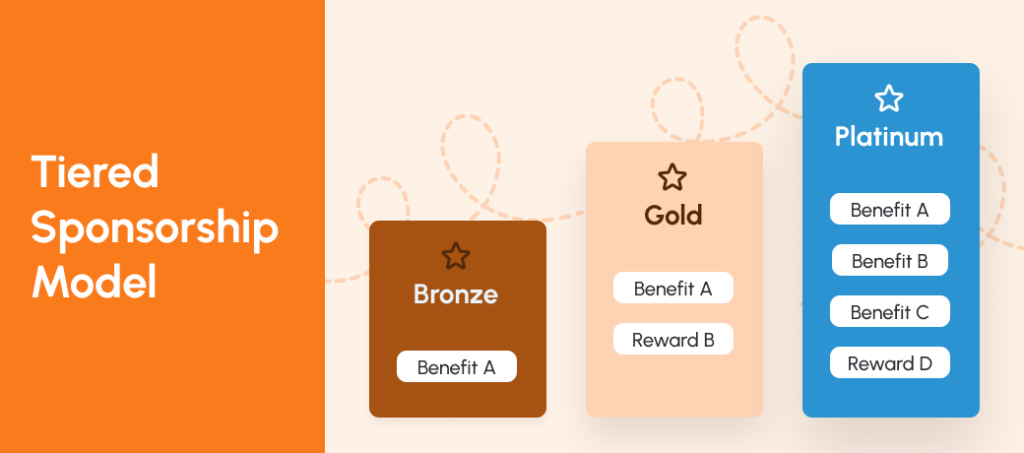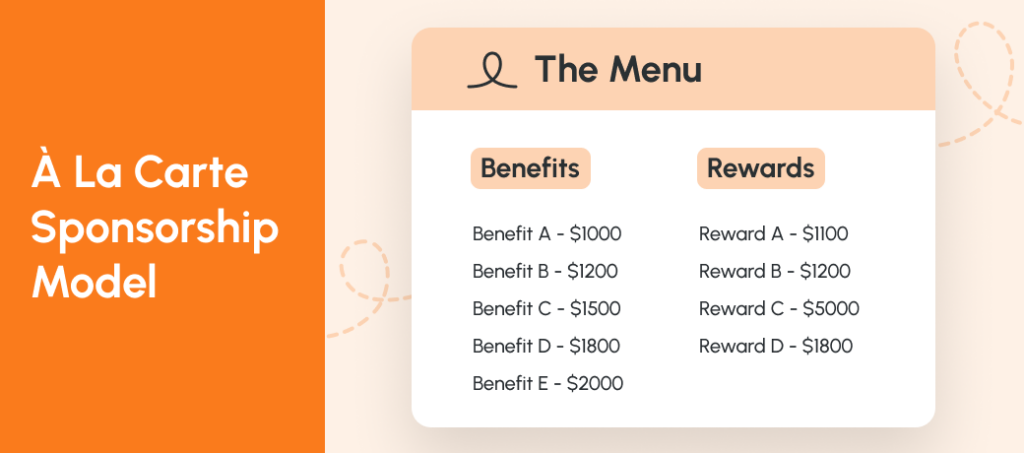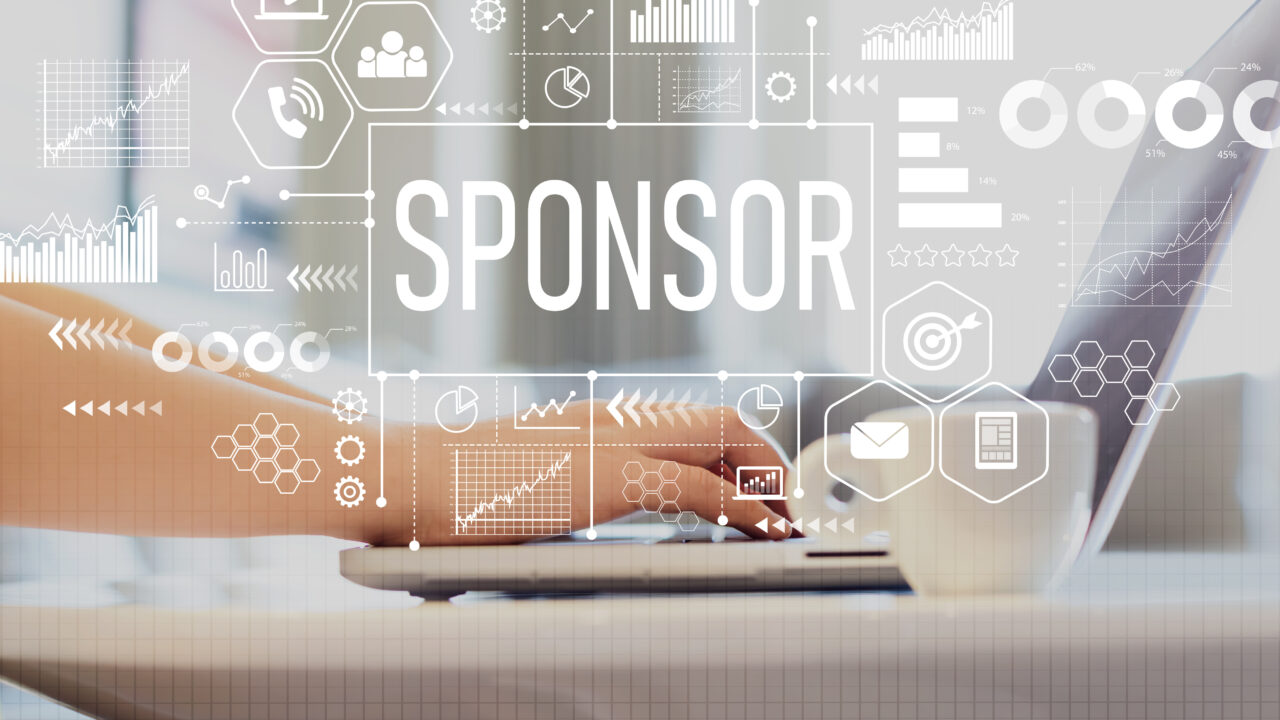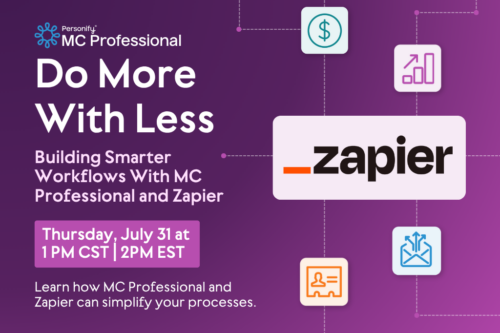Nonprofit funding comes in many forms. However, general-purpose lump sums and grants aren’t the only options. Event sponsorship is an effective way to link support directly to specific activities, and structured options help get funders on board. Here are some great sponsorship package ideas to get you started.
What Is a Sponsorship Package?
Sponsorship packages convince people you’re worthy of funding by giving them convenient ways to contribute. No matter how you structure the available options, they should clearly show what people stand to gain.
The key to remember here is that you need to communicate what the return on investment is. When someone reads your sponsorship package, they should get an immediate feel for the benefits of participating. For instance, some incentives you can highlight include:
- Publicity: This often includes sponsor advertisements at physical events, but you can also give shoutouts in your advertising materials, online, or in other spots. You don’t have to limit publicity incentives to the event itself either.
- Profit: Just because you’re a nonprofit doesn’t mean your sponsors have to be. For example, a local restaurant that sponsors your community festival might welcome the chance to become an onsite vendor.
- Tax benefits: Some backers provide in-kind gifts for use or distribution during events, like giveaway prizes or food. Depending on their value, these assets can be appealing write-offs.
The Importance of Sponsorship for Events
Sponsorship helps events impact far broader audiences. Nonprofits that bring funders on board can dramatically extend their reach. Whether they solicit direct funding or other types of sponsorship, they end up with more budget left over for outreach and advertising.
Being sponsored also has a positive effect on word-of-mouth. Some people may be more likely to attend when your event sounds more credible. This is particularly noticeable when working with local sponsors. You can piggyback on their positive PR.
There’s also the issue of event quality. Being able to pay for incidentals, like supplies, printing, or a larger venue, makes it easier to put on a polished production. Think of it like you’d approach program planning for your beneficiaries — throwing a better event is better for attendees. Finding sponsors is a critical part of event planning, and designing your sponsorship packages is the first step.
What Should a Sponsorship Package Include?
Sponsorship packages are like fundraising prospectuses in that they must communicate a lot of information in a short amount of space. For this to work, it’s helpful to keep some truths in mind:
Provide Details: Never assume sponsors will be familiar with you.
Backers might be new to your cause, so don’t skip the preliminaries. Introduce them to your mission statement, vision, beneficiaries, backstory, and leadership team.
Be concise yet thorough, using figures and visuals to paint a picture of what you do, how you do it, and who you impact. Seeing beneficiary and event attendee demographic data can be hugely motivating for potential sponsors who want to cultivate brand awareness.
Include hard numbers that reveal your historical impact. Explain how sponsorship would help you do more good work with a focus on the event itself. By cultivating trust from the start, you can decrease hesitation.
Make It Actionable: Becoming a sponsor should be as easy as possible.
Many potential sponsors have a lot on their plates. Don’t leave it to chance that they’ll remember to sign up or donate after reading your package and getting distracted.
Your package should include actionable information. For instance, this can mean hyperlinks, QR codes, phone numbers, emails, and social media handles. Do whatever you can to ensure readers make the connection and know how to reach out.
Accommodate Diverse Participation: Sponsorship comes in many forms.
Not all sponsors will have the interest or financial means to write you a blank check. By providing multiple options — as we discuss more below — you open the door to all comers.
Grab Attention: Go for the visual sell.
Effective sponsorship packages use consistent design and layout elements to keep readers focused. It’s smart to include things like images of past events and your team in action, but don’t forget your brand identity. The color schemes, logotypes, and data visualizations you use to package your story can make the narrative more palatable, especially for busy decision-makers.
Explain Your Goals: Be as transparent as possible.
Your sponsors are partners, and you should treat them as such. Explain how much money you need to raise, the timetable, and what you’ll be able to do with different levels of funding. By being transparent and honest, you give the impression that you’re competent enough to handle sponsorship benefits responsibly — a great way to encourage confident participation.
How to Come up With Event Sponsorship Package Ideas
Designing event sponsorship packages involves more than just creating a PDF or write-up. You need a cohesive plan, and you should focus on attracting as many reliable backers as possible.
Brainstorm Your Sponsor’s Goals
Start by considering what kinds of potential sponsors you’ll approach. Are there common factors, like industry, size, or geographic region? Do you have contacts at those organizations who can clue you in on their typical charitable activities?
Social media can be a goldmine of information. Brands love to share their nonprofit contributions for PR reasons, so it’s possible to get a feel for what they’re all about. Do your research to frame your message in a way that appeals to different donors.
Pricing Your Package
Your sponsorship document should clearly state how much it costs to be a sponsor, but that doesn’t mean choosing a single magic number.
Choose a Sponsorship Model
As we noted above, you want to accommodate different kinds of participation. Two widely used sponsorship models can help you achieve this: tiered and à la carte.

The Tiered Sponsorship Model
Tiered sponsorship incentivizes participation with progressively better sponsorship levels or tiers. For example, many nonprofits welcome sponsors at bronze, silver, gold, and platinum levels, with the higher tiers corresponding to larger donations and greater rewards.
Including tiers in your package is an easy way to let everyone get involved. Even if they can’t afford the higher levels, sponsors can still chip in. Tiers also eliminate perceived favoritism by grouping backers fairly according to their contributions.

The À La Carte Sponsorship Model
À la carte, or custom, sponsorship lets backers choose specific benefits or rewards. They can build their own packages to fit their financial means and objectives.
The nice thing about this model is that you can use it to complement tiered sponsorship. For instance, you might not perfectly hit the mark when planning your level-based packages. Allowing add-ons and customization makes life easier for donors.
Assign Benefits to Each Sponsorship Package
Your sponsorship packages should be unambiguous, even with à la carte options. In other words, you should clearly specify what backers will receive.
Why is it vital to hash out the benefits before you solicit fundraising? It all comes back to fair treatment, transparency, and relationship building. Ideally, you want sponsors you can count on for multiple events. Make it worth their while by putting all your cards on the table.
When assigning benefits, consider more than just the cash value of reward items and swag. Put yourself in the sponsor’s shoes and think about how you’d feel about receiving each benefit. Would they make you feel appreciated? Do they further your publicity goals? Are they worthy of showing off and sharing online?
Finally, remember that tiered sponsor benefits can be cumulative. For instance, it’s common for higher gold-level sponsors to receive everything from the lower bronze and silver levels as well as unique extras. Draw clear distinctions between tiers to encourage backers to level up.
How to Find the Right Event Sponsors
Not just any event sponsor will do. For instance, an addiction intervention nonprofit might not want a brewery as a backer. Consider whether each sponsor:
- Has a mission that aligns with your own
- Serves your beneficiaries or the community your event targets — which may be mutually exclusive
- Has a track record of sponsoring nonprofits in your field or similar events
With those ideas firmly in mind, you can search for backers. Start by casting a wide net. Build a spreadsheet that includes businesses in your target area that sponsor events. Many companies advertise their charitable activities on their social media profiles or websites.
Next, figure out an approach. Do you have LinkedIn or other connections you can leverage to strike up a conversation? These routes tend to be more successful than pitching random people.
Take notes on reasons each potential sponsor might be interested and add them to your spreadsheet along with the names of the contacts you’ll talk to. For more pointers on finding great event sponsors, check out this article.
How to Pitch Event Sponsorship Packages
Pitching sponsorship packages isn’t as intimidating as it sounds. As long as you’ve created a thorough package document, you’ve pretty much got a script.
Reach out to your identified contacts to share the opportunity. The initial call, email, or social media note should be brief but include actionable touchpoints.
Introduce yourself, your organizational ethos, and what you hope to achieve with the event. Try to find common ground that explains how the event relates to the sponsor’s mission. Finally, sum everything up with an incentive — don’t go into specifics here, but let them know they could gain publicity, help the community, enhance their reputations, etc.
Before hitting send or hanging up, make sure you’ve remembered the following guidelines:
- Hyperlinks are your friends: Your sponsor shouldn’t have to use Google to find out more.
- Share your sponsorship package document: Either link to or attach your sponsorship package details. If it’s a call, ask if you can send it over.
- The first contact is just for gauging interest: It can be tempting to try to lock commitments in right away. Trying a hard sell often works against you, however, because people need time to consider. Your sponsorship package document should do the selling for you. Keep the first message short and sweet — a couple of paragraphs at most.
Smart Event Sponsorship Package Ideas and Examples
With all that said, you still have to come up with specific sponsorship package ideas. Here are some of our favorite examples for crafting a well-rounded package:
Branded Badges and Lanyards
Nonprofit event sponsors can have their brands featured on event badges and lanyards. Since attendees and staff wear these badges, they offer increased visibility. They’re like mini walking billboards, but not so in-your-face!
Sponsor Email Promo
Consider reserving promotional space in your event emails for sponsor shoutouts. This is a zero-cost incentive that often reaches an even larger targeted audience than at-event advertising.
Social Media Posts
Help your nonprofit sponsors gain exposure by featuring them in dedicated social media posts in the run-up, during the event, and in your postgame PR recaps. These posts should highlight their support and involvement. Also include @-mentions, hashtags, and other breadcrumbs that drive traffic back to your sponsors.
Sponsored Event Videos
Many nonprofits create customized event videos welcoming attendees or guiding them through the day’s itinerary. This is a perfect spot to showcase a sponsor’s brand, and it works just as well for webinars.
Sponsored In-event Notifications
If your event sends notifications, why not take advantage of the branding opportunity? Let sponsors promote themselves to engage attendees — it will go over well as long as you don’t spam and allow opting out.
Mobile App Sponsorship
If you’re running a modern event, you should be using a mobile app, and this is another great promotional opportunity. Including sponsored content can make things more interesting for attendees and keep backers happy.
Sponsor Hub Feature
Build a designated hub for your sponsors online. Include information about their brand, describe their involvement in the event, and link to their web properties. This should be a low-tier reward.
Sponsored Gamification
Event gamification enhances attendee engagement and makes the day more fun. Letting your sponsors take part in interactive activities achieves two goals on top of incentivization. It spices up the event, and it can take some of the program planning burden off your shoulders.
Featured Resources
Nonprofit events commonly provide access to resources that further their charitable work. You can let your event sponsors showcase their content in a designated section, but be sure it aligns with your mission.
Multimedia Logo on Event’s Homepage
Event homepages should always include sponsor logos. You may also want to feature rollovers and breakout pages like the United Way website does. Grouping the sponsors by tiers is also a wise move.
Exhibit Hall Sponsorship
Venue sponsorships can absorb significant event costs. Recognize these valuable contributions onsite, including in programs, decor elements, and event maps.
Event Tickets
Event tickets should be on every nonprofit leader’s sponsorship benefit list. Letting backers participate for free is an easy way to boost attendance and give them a first-hand view of the event’s potential.
Virtual Event Platform Sponsorship Package Ideas
Virtual event holders should definitely consider the preceding sponsorship benefits. Some opportunities, however, work best in digital spaces:
Sponsored Virtual Exhibit Booths
Virtual exhibit booths cost way less than their real-world counterparts. But don’t be fooled — they’re equally valuable sponsorship opportunities.
Depending on your event software, virtual booths can include logos within video descriptions, landing pages, or video watermarks. Some nonprofits even sell sponsorship placement in the backgrounds behind speakers or on the apparel they wear on camera. In short, there’s no shortage of possible reward incentives you can use to attract backers.
Sponsored Surveys and Polls
Using surveys and polls to gauge event satisfaction does more than just help you feel good about your awesome work. This feedback also serves as a valuable source of performance data for future sponsorship pitches.
You can use this angle to incentivize sponsors. For instance, letting someone know they can sponsor your data-gathering also tells them you’re doing your best to provide value and uphold your fiduciary responsibility. It’s an added confidence booster if you’re still on your way to building a stellar track record!
Digital polls can include logos and other branding elements, but be sure these add-ons aren’t distracting. This applies to dedicated surveys and social media polls alike — it may be best to include links at the end.
Virtual Venue Sponsorship
In most cases, virtual venue sponsorship involves cost subsidization. For example, backers commonly foot the bill associated with holding webinars or live streams. But there’s more than one appealing way to sell this sponsorship opportunity.
One possible option is to offer meeting scheduler links. You might show webinar participants links where they can meet one-on-one with a representative from a sponsor. This works best when your sponsors are interested in pursuing your attendees as qualified leads.
Sponsored breakout sessions are also another useful option. Your primary webinar might only have advertising room for so many sponsors. By letting lower-tier backers fund specific sessions, you can accommodate more funding. You’ll also ensure sponsors can put their names on the content that aligns most closely with their missions.
Conclusion
Sponsorship packages help events get off the ground and stay successful throughout. They’re integral to showing funders why they should pitch in and making it easier to do so.
Choosing your ideal sponsorship package ideas takes work. The payoff is worth it, however; nothing beats increased participation and higher odds of follow-up events. Of course, sponsorship is just one part of the equation — you also need to handle the logistics on the big day! Learn how the MemberClicks conference app can lighten the load, and start planning a better event.
















